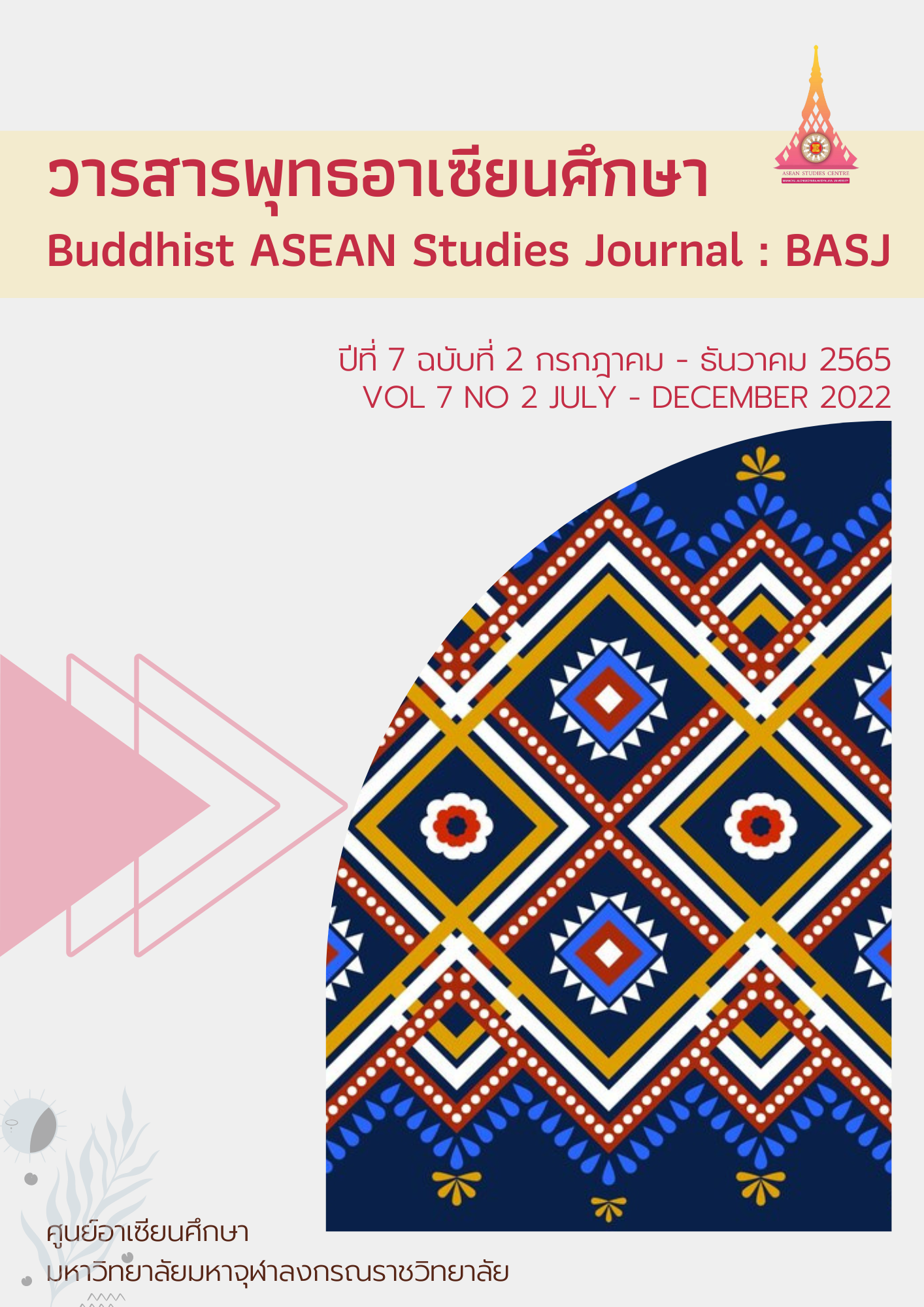Buddhism into the rapid change of ASEAN
คำสำคัญ:
Buddhism, rapid change, dimensions, moving, administration, ASEANบทคัดย่อ
This study aims to study the history of Buddhism in ASEAN countries, and study the Buddhist activities in ASEAN; Including studying the dimension of driving Buddhism in ASEAN. The scope of the study is as follows: 1) History of Buddhism in ASEAN in the past such as Buddhism in Thailand, Cambodia, Laos, etc. 2) The establishment of ASEAN 3) The activities of Buddhism 4) Behavior and the way to driving Buddhism. Buddhism came into the ASEAN countries in the reign of Ashoka Maharaja by he sent the dhamma’s messengers Sona Thera and Uttar Thera to spread the teachings of the Buddha in Southeast Asia. Currently, Buddhism in Southeast Asia can be divided into two sections namely 1. The country has mainly Buddhism means most of the population in the country respects Buddhism namely Cambodia, Laos, Myanmar, Vietnam, Thailand, and Singapore. 2. Country respects the Buddhism just some areas mean the country had to respect Buddhism before but now there are very few such as Brunei Darussalam, Indonesia, and Malaysia. The way to manage Buddhism supports the transformation of ASEAN mechanisms namely the integration of Buddhist education into the ASEAN. Cooperation between Buddhist organizations and ASEAN leaders, also the adjustment of Buddhism to according with ASEAN should develop the Buddhist heir to have the knowledge, and also dissemination of Buddhism must be according to the context of the ASEAN community using the modern technologies and innovations for dissemination.
เอกสารอ้างอิง
Bhikkhu Ñānamoli. (1991). The Minor Readings. Oxford: Pali Text Society.
Bhuddadasa Bhikku. (2014). Dhammikasangkhomniyom. Bangkok: Green Mind Press.
Cinchawna, C & Aunwatthana, P. (2016). Buddhism in ASEAN: Case Study of Lao People’Democratic Republic, Communist Regime Affected on Buddhism, in National academic conference in administration of Business Rajamongkhonphranakhon and presentation the creative research working. on December 16-17, 2016.
Chotisakulrat, P. (2554). Peaceful communitcation. Et ed 2rd. Bangkok: Semsikhalai press.
Mahatthanadull, S. & Maha Ghosananda. (2558). The Engaged Buddhism in Cambodia. Retrieved on June 1, 2017. From
http://www.mcu.ac.th/En/articlecontent_desc.php?article_id=2003&articlegroup_id=335.
Marston, J. & Guthrie.E. (2004). History Buddhism and new religious movements in Cambodia. Honolulu : University of Hawaii Press.
Norman, K.R. (1997). The Word of the Doctrine. London: Pali Text Society.
Payutto, P. A. (1996). Buddhadhamma Expanded and Revised (Abridged). Trans. and ed. Bruce Evans. Bangkok: Buddhadhamma Foundation.
Phathepwethee (P.A. Payutto). (2532). Buddhism and Thai society. Nakorn Pathom: Wat Nyanavesakavan.
Phramaha Hansa Dhammahaso. (2558). The middle way is survival of world manner. Retrieved on June 1, 2017 from https://www.mcu.ac.th/article/detail/343 http://www.mcu.ac.th/site/articlecontent_desc.php?article_id=2036&articlegroup_id=330.
Phramaha Somchong Siriotharo and Team. (1985). The role of temple and Thai monks in future. Phranakorn Si Ayutthaya: Sangrung Press.
Phramaha Somboon Vutthikaro (Phanna), “The Essence of Buddhist Engagement in Cambodia”, (Graduate School : Mahachulalongkornrajavidyalaya University), Lecture Note, (photocopy)
Phrakrusophonpariyattisuthee. (2012). Each views to adjust of Buddhism to the ASEAN Community. Retrieved on June 1, 2017 from https://www.gotoknow.org/posts/483924
Phrabidikasuphot Tapasilo. (2559). History, Propagation Routes of Buddhism and Principle of Buddadhamma in the Lop Buri period. (Research). Phranakorn Si Ayutthaya: Mahachulalongkornrajavidyalaya University.
The Buddhist Centre. (n.p.). What is Buddhism. Retrieved on June 1, 2017 from https://thebuddhistcentre.com/buddhism
ดาวน์โหลด
เผยแพร่แล้ว
รูปแบบการอ้างอิง
ฉบับ
ประเภทบทความ
หมวดหมู่
สัญญาอนุญาต
ลิขสิทธิ์ (c) 2022 วารสารพุทธอาเซียนศึกษา

อนุญาตภายใต้เงื่อนไข Creative Commons Attribution-NonCommercial-NoDerivatives 4.0 International License.



